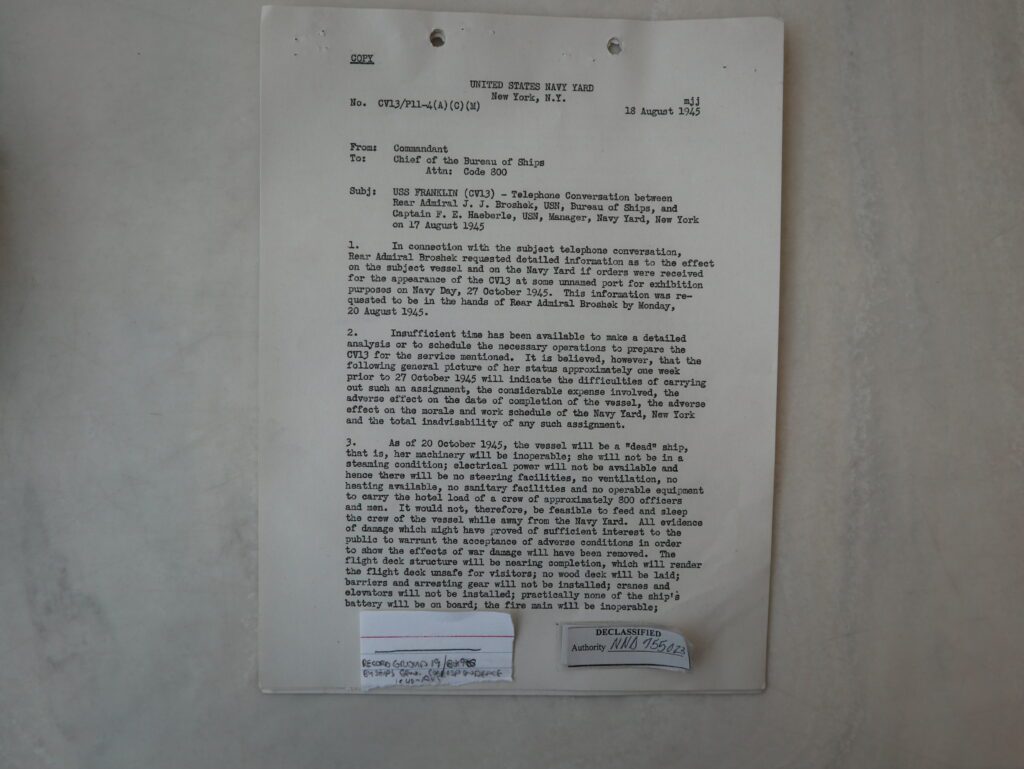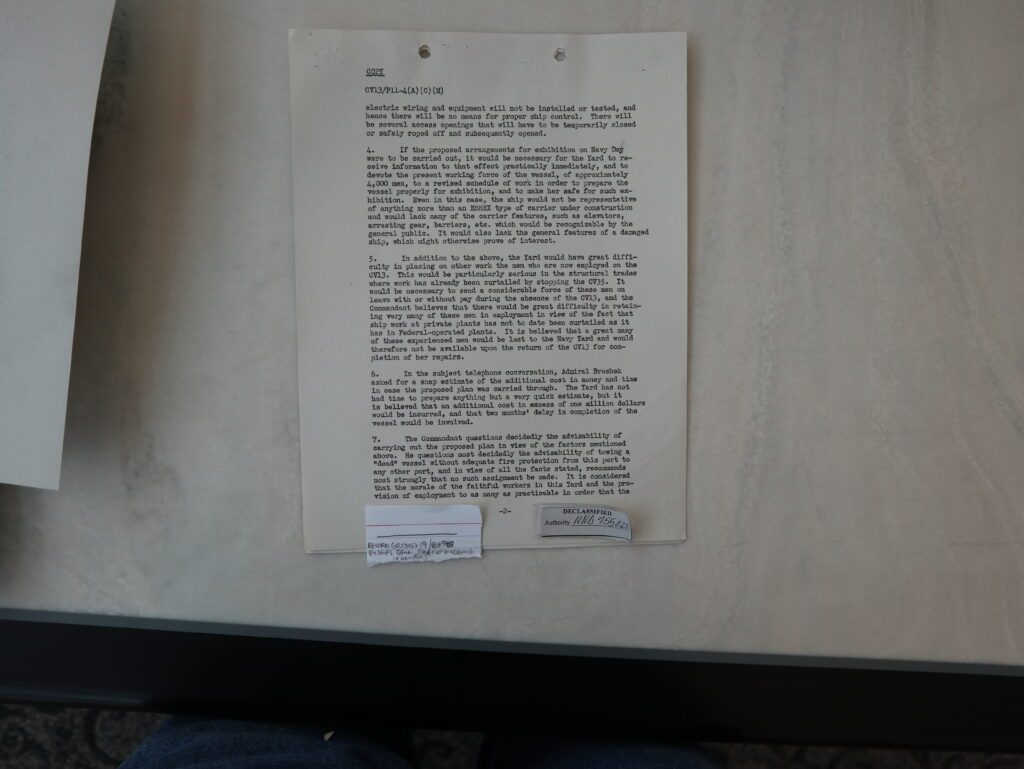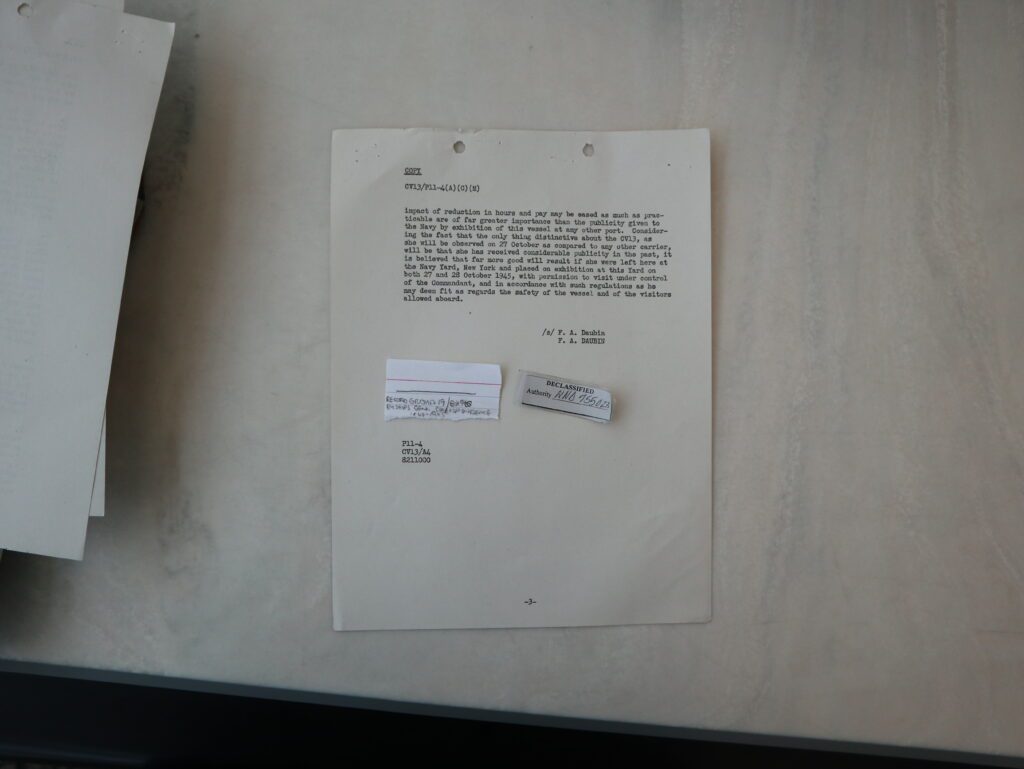Navy Day Does Without USS Franklin
If you ever wonder how to respond to an ill-conceived request from a superior in your organization without stepping on toes, I have an example for you!
I found it while researching my book on USS Franklin (CV-13), whose crew remains the most decorated in US Navy history.
In August 1945, Franklin, the most heavily damaged US Navy ship NOT to be sunk, was moored in the Brooklyn Navy Yard. Her crew had sailed her 12,000 miles home after being heavily damaged 50 miles off the coast of southern Japan.
Rear Admiral J.J. Broshek, USN, Assistant Chief of Bureau for Ship Maintenance, 1 called Captain F.E. Haeberle, USN, the manager of the Brooklyn Navy Yard. The admiral asked for “detailed information as to the effect on the subject vessel and on the Navy Yard if orders were received for the appearance of CV13 at some unnamed port for exhibition purposed on Navy Day, 27 October 1945.”

Having spent time in corporate communications, I understand the importance of learning to communicate successfully with those above, on the same level, and below me. I came across this letter last December while doing research at the National Archives in Columbia, MD.2
It is a valuable example of responding to a superior with information counter to that superior’s thinking.
Why I Admire Captain Haeberle’s “Navy Day” Letter
- Captain Haeberle’s tone is respectful (I hesitate to mention this, but I could tell you stories of those in the corporate sector that weren’t)
- He gave a detailed response, but he used words wisely.
- He provides data and examples as to the impact on the Navy Yard and its personnel
- He explains the reasoning behind his opposition to sailing Franklin elsewhere to participate in Navy Day
- He offers a cost estimate
- He provides an alternative.

There is no way to tell how serious BuShips was about sailing Franklin from her berth to some unnamed port. Still, I noticed in the letter that the telephone call occurred on Friday, 17 August 1945, and a written response was requested to be on the admiral’s desk in Washington by Monday, 20 August 1945. The letter was composed the following day. In any event, the captain must have been persuasive. There was no further mention of Franklin leaving its berth.
The next time you need to persuade someone to come around to your way of thinking, remember Captain Haeberle’s letter and use it as a template.

Did you arrive here via a search engine? I am the author of the forthcoming book Heroes By The Hundreds: The Story of the USS Franklin (CV-13). In addition to writing about the bravery of the crews that saved her, I will discuss the lessons we can learn in leadership and decision-making and the changes the US Navy made because of those lessons.
Feel free to follow me on Facebook. There, I am M. Glenn Ross, Author. I also write a monthly newsletter, Glenn’s Action Report, about subjects I find interesting in my research. You can sign up for it below. Feel free to leave a comment or ask a question. Thanks for reading.
-Glenn
Footnotes
- Navy Department Bureau of Ships Year Book 1945, file:///C:/Users/User/Downloads/txu-oclc-26977445.pdf, Accessed via University of Texas at Austin Texas ScholarWorks on 29 October 2024
- Captain F.E. Haeberle, USN to Rear Admiral J.J. Broshek, USN, 18 August 1945, National Archives Records Group 19, Box 908